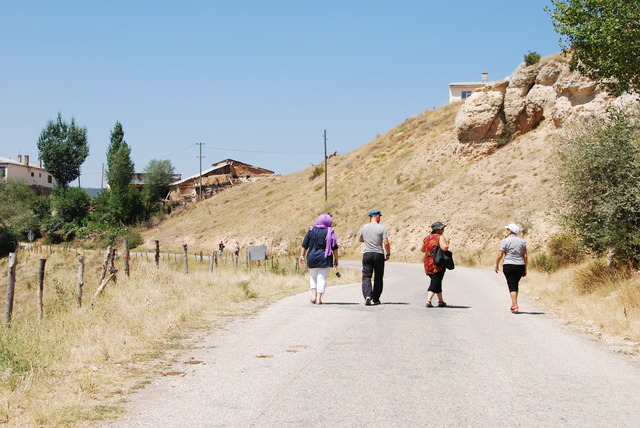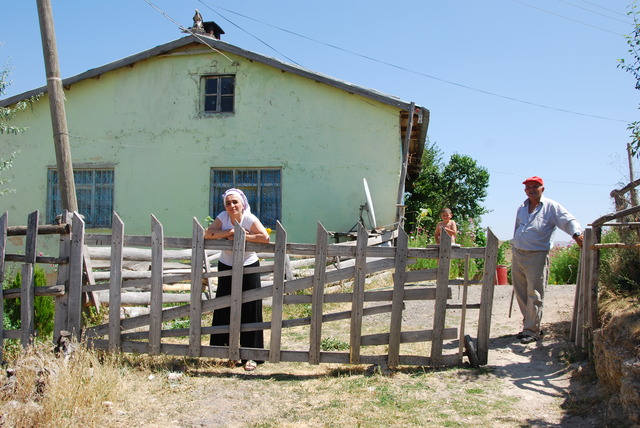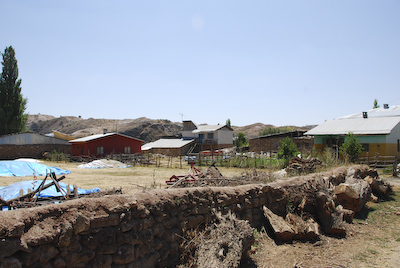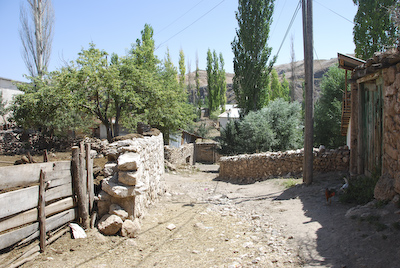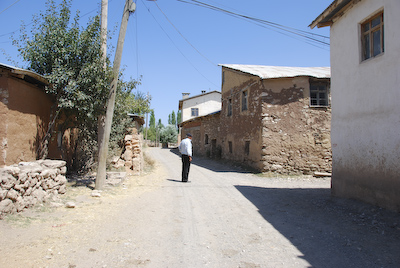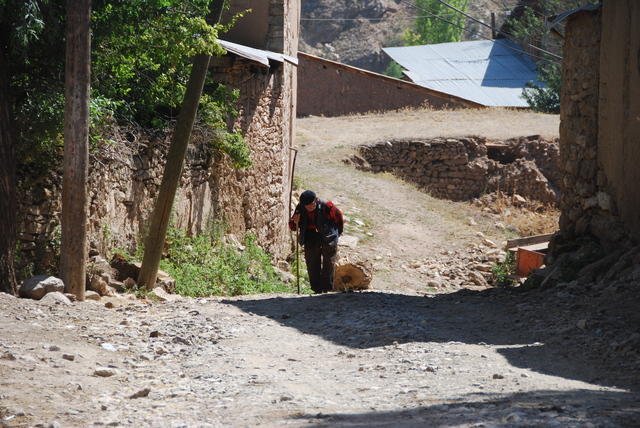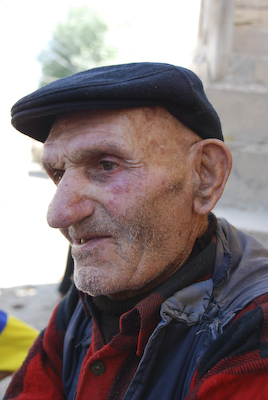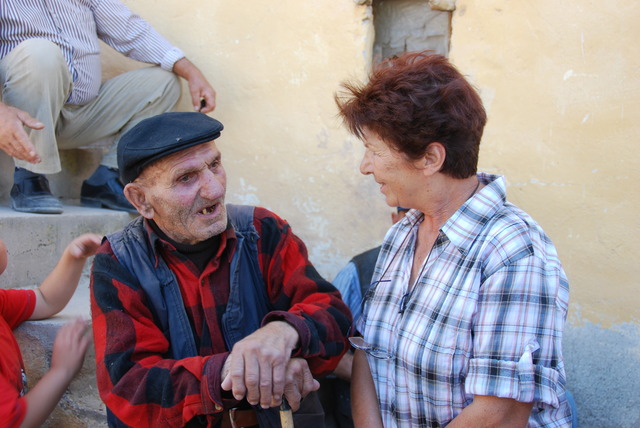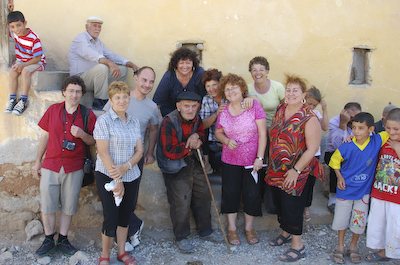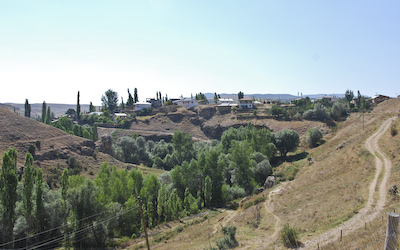Today was quite a day! We stayed at the Sivas Buyuk Hotel last night. Sivas is the largest city in Anatolia with a population of 301,000 people. The city was named “Sebasteia” in the 1st Century BC to honor the Roman Emperor, Augustus. It was the capital of “Armenia Minor” under the emperor Diocletion at the end of the 3rd century AD.
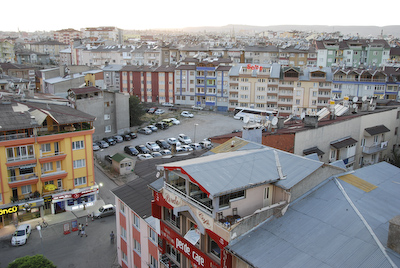 View from My Window at Back of the Sivas Buyuk Hotel
View from My Window at Back of the Sivas Buyuk Hotel
Under the Byzantine emperors, Sebasteia was a large and wealthy Anatolian city. It was located at the junction of the Persia and Bagdad caravan routes and was a busy commercial center from the earliest ages. The Sekjuk Turks arrived in the late 11th century, renamed the city, Sivas, and ruled until the 1400s. The Sivas region was then plundered by the Central Asian ruler, Timur (Tamerlane).
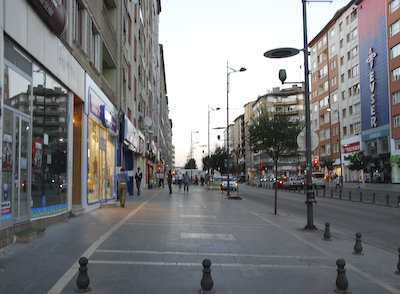 Street-side View from the Sivas Buyuk Hotel
Street-side View from the Sivas Buyuk Hotel
In the 19th century there were almost 200,000 Armenian people living in Sivas Province. The city had a population of about 45,000, with more than one third Armenian inhabitants. During June and July 1915, most of the Armenians of Sebasteia were either killed or deported. By the late 1990’s the Armenian population had dwindled to less than 50 people in the province of Sivas. There is still a scattering of Armenians, mostly elderly, in villages around Sivas. Many villages also have a few inhabitants who will say that they have Armenian mothers or grandmothers.
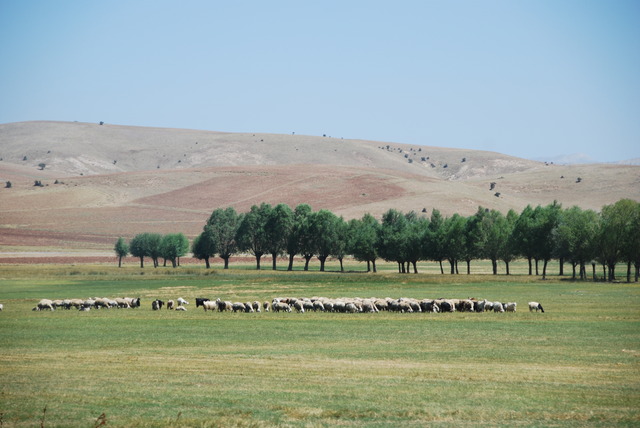 Countryside between Sivas and Duzyayla
Countryside between Sivas and Duzyayla
We drove out of Sivas toward the village of Khorkhon, which is called Duzyayla in Turkish today. Khorkhon is the village in which Roseanne’s and my grandfather, Parnoug Shegerian was born. He was born and lived in Khorkhon for the first almost 30 years of his life. His brother, Arakel, went to the United States first, in about 1905, to work. Parnoug followed his brother and arrived at Ellis Island in 1910, leaving behind a wife and three daughters. We called my grandfather “Bigbob” because “bob” means ‘grandfather’ in Armenian and he was tall.
 Fertile Fields Near Khorokhon (Duzyayla)
Fertile Fields Near Khorokhon (Duzyayla)
Our driver, Selcuk, drove the van out of Sivas onto the main East-West highway heading East toward the town of Hafik. The main roads are very good, frequently two-lanes in each direction and well paved. We reached Hafik in about 30 minutes and turned North onto a smaller dirt road. Selcuk asked for directions to Khorkhon and the man nodded his head and said “Duzyayla” and pointed in the direction we were going. We drove on a continually narrowing road which soon turned into one lane for both directions. The road was bumpy and rocky and not paved. After about 15 minutes, we spotted a sign which read “Duzyayal 4 km”. My cousins and I jumped out of the car for a photo opportunity.
 The Shegerian Descendants of Khorkhon
The Shegerian Descendants of Khorkhon
The land around Khorkhon is all farmlands and grazing land. There were large wheat fields on both sides of the road and occasional flocks of sheep. As we approached Khorkhon, it became hilly and greener because of the poplar trees and obvious irigation. The houses looked colorful and well maintained. We all got out of the van to walk up the hill and into the village. I thought about my grandfather and that he had walked up that hill, probably many times, a hundred years ago.
As we passed a house, a young attractive woman with a white head-covering approached her fence and asked us in English where we were going. We said that we were looking for the Armenian church and the homes of our grandparents.
Beyhan and her uncle Ishmael
After a brief conversation, she and her uncle invited us into their home for chai. We passed through her fence, walked into a beautiful garden of flowers, took off our shoes, and entered their house.
The large room was like a reception room, probably a living room, with cushion covered divans running the lengths of three walls. There were decorations on the shelves and a few photos on one wall of the uncle in his youth.
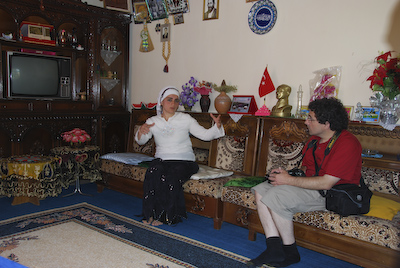 Beyhan in Her Uncle’s Living Room
Beyhan in Her Uncle’s Living Room
We sat down and the woman’s uncle, whose name we learned was Ishmael, left the room to prepare the chai. The woman, whose name was Beyhan, sat opposite us and began to speak with us. We told her that our grandparents were Armenian and had lived in Khorkhon one hundred years ago and we came to see the village of their birth. We enjoyed a hot cup of Turkish chai and cookies.
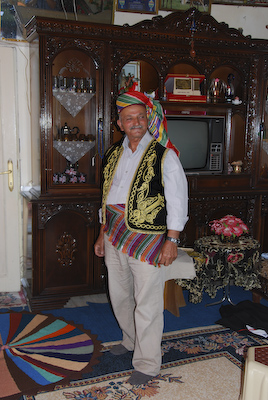 Ishmael Showing a Uniform From His Youth
Ishmael Showing a Uniform From His Youth
My cousins, Francoise and Nicole discovered that their aunt’s step-son was still alive and lived in Germany. During the genocide, their aunt was saved from death by a Turkish neighbor who told the Turkish police that she was his wife. She married the man and stayed in Khorkhon for the rest of her life.
 Ishmael’s Wife Joined Us Outside
Ishmael’s Wife Joined Us Outside
After our tea, Beyhan and Ishmael said they would show us the ruins of the Armenian church in the village. When we emerged from the house, an elderly woman was walking down the road. She greeted us happily and we learned that she was Ishmael’s wife. She apologised for being late and said she was reading the Koran and praying.
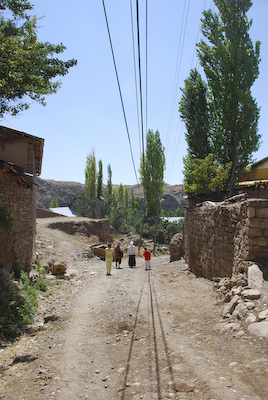 Walking Through the Village of Khorkhon
Walking Through the Village of Khorkhon
We then walked through Khorkhon like a group of locals on a Sunday stroll. The village is very hilly with a wide variety of houses, barns, and farm buildings closely arranged on fenced pieces of land. We passed a small mosque in the middle of the village and a small building across the narrow road for men to wash their feet before entering the mosque.
Then we saw what looked like a large grass-covered stone hillock on the side of the road. We followed Ishmael around and down to the other side and looked at a small stone structure. There were openings in the building at different levels and the large stones were covered with grass and dried moss.
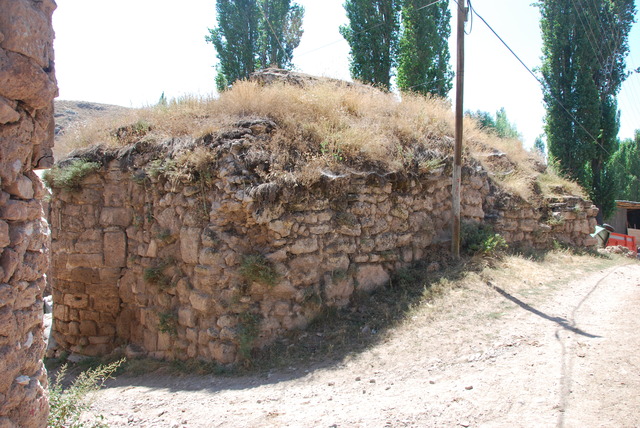 Outside of the Ruins of the Armenian Church
Outside of the Ruins of the Armenian Church
Chris found an opening and crawled in. Soon everyone crawled into the ruins of the Armenian church of Khorkhon. The inside walls were completely stripped of any adornments. Armen, our guide, later said that he thought the church could have been built 700 or 800 years ago, judging by the large stones in the walls. He said that newer churches were built with smaller stones.
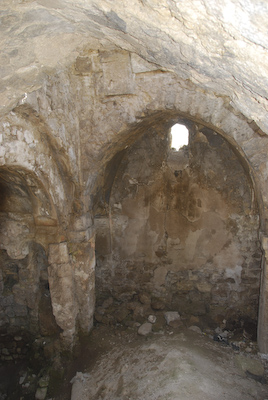 Looking Into the Ancient Church
Looking Into the Ancient Church
A huge hole had been dug in the ground where the altar would have been. Beyhan told us that people had dug up the floor of the church looking for buried treasures. They had heard that before the Armenians left, they buried their valuables in the ground of the church. When I was young, my grandmother told me that her father, who was a parish priest, had buried the chalices, gold crosses, and other altarpieces and valuables of their church in the yard behind their house in Ishan.
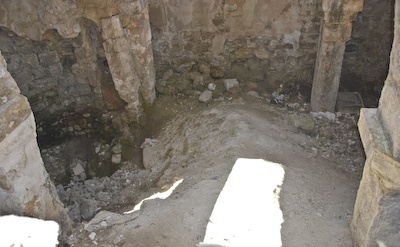 Interior of the Armenian Church
Interior of the Armenian Church
Armenian crosses had been carved in the stone of the supporting columns and there were a few inscriptions carved on the walls. We photographed everything we could and one-by-one crawled back out through the opening. This was the church in which my grandfather, Parnoug, was baptised, attended services on Sundays and holidays, married his first wife, and baptised his children. Wow!
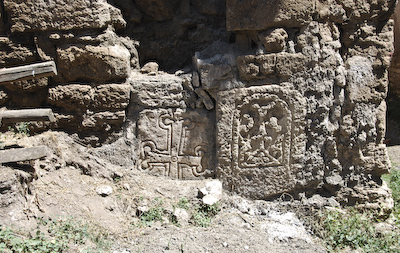 Stones with Religious Markings at Exterior of the Armenian Church
Stones with Religious Markings at Exterior of the Armenian Church
Parnoug, (Bigbob) is my and Roseanne’s grandfather. Parnoug is Chris’s great grandfather. His brother, Arakel, had one son, Nishan. Nishan’s granddaughters are Nicole and Francoise. Nishan was also born in this village in about 1900. Nicole’s and Francoise’s grandmother, Marta, was also born in Khorkhon. She married Nishan when she was 16 years old. They left the village together on foot to escape death at the hands of the Turkish army in 1915 and eventually migrated to Marseille, France.
We continued walking around the village looking at the buildings, taking photographs, and I tried to imagine what Big Bob’s life here was like. It really was a lovely farm village with chickens and cows and sheep.
As we walked around more village people joined us. They were curious about us and tried to talk to us. The longer we stayed, more people came out to see us and more stories and information were revealed. Finally, one of the men said that there was one Armenian man still living in the village. He was very old and not well and lived on subsistence and hand-outs from the Turkish villagers.
A small contingent of men went to his house to talk to him. He did not want to talk to them and didn’t want photographs.
Then he asked the men if there were any women among the group. When he learned that there were women visitors, he came out to meet us. Our first glimpse of Ovak Karagoz was of a bent-over aged man slowly walking up the hill with a cane.
When he first approached the group he was surly and upset. He put his hand up and repeated several times, “No Photos!” in Turkish. When he saw us, he sat down slowly on a stone step and began to speak to us in Armenian. Ovak kept asking us if we understood Armenian and did we speak Turkish. He wanted to speak only to the female cousins.
We learned that Ovak was 73 years old, although he looked much older. His parents and siblings were long gone. He had lived in the village his entire life and, he said he “had nothing”. As we spoke to him he consented to photos and wanted photos taken with all the female cousins. This is a real Armenian man who likes women! We all laughed, including Ovak.
He was mistrustful of the Turkish villagers and said he could talk to us if we could go up to the mountains and sit alone without anyone else around us. Of course, by now, the entire village was hovering closely around us. When we asked questions about his life, Ovak repeatedly said we had to go to a private place to talk. “The villagers could not be trusted.”
We had stayed in Khorkhon for many hours and we had to leave. We said tearful goodbyes to Ovak and the townspeople gave me his address to send our photos. We thanked Beyhan and Ishmael for their hospitality and generosity and the opportunity to meet the last Armenian in Khorkhon.
We tearfully boarded the van and drove out of my grandfather’s village…..
